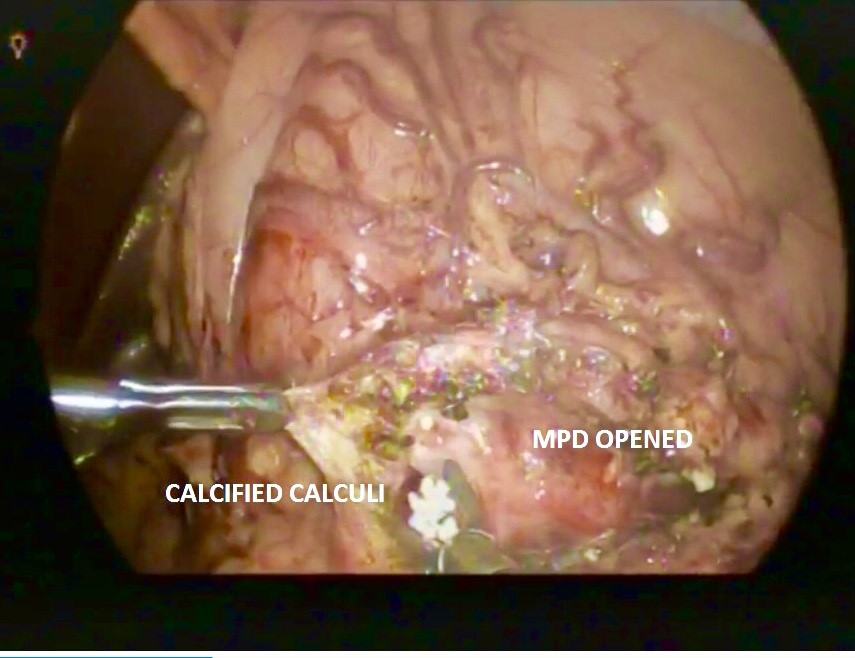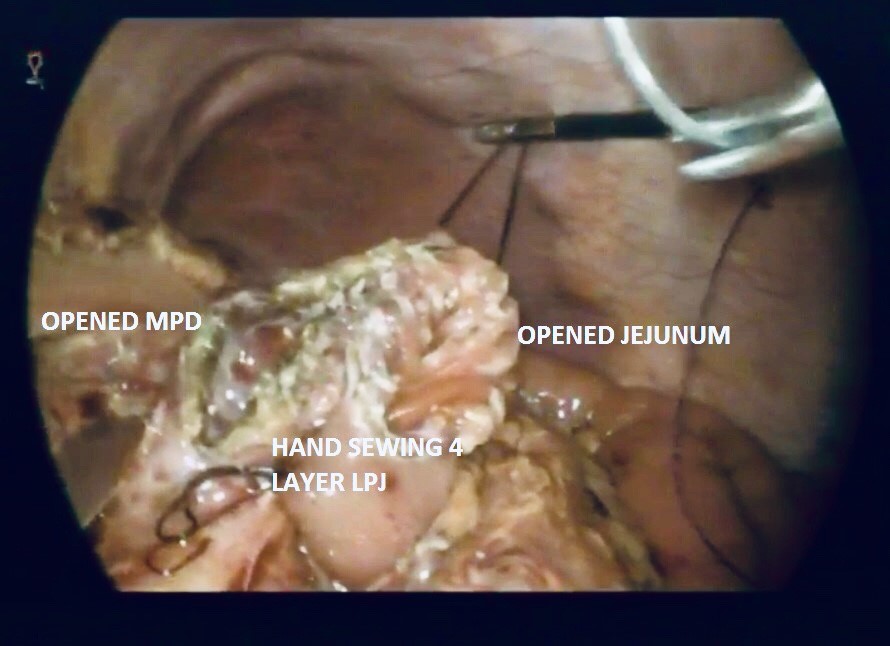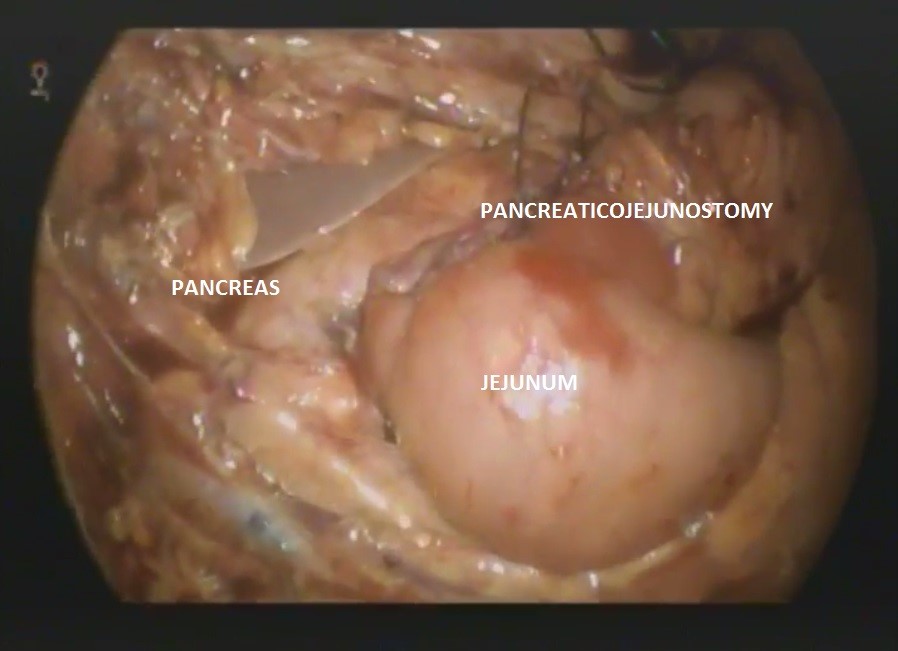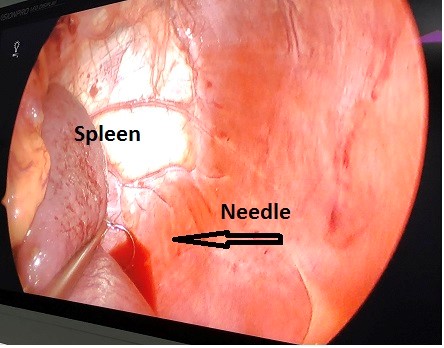Annals of Medical & Surgical Case Reports
Case report
Pancreas, Pins and Pains-Laparoscopic Lateral Pancreatojejunostomy
Khan M1* and Mukherjee AJ 2
1Junior Conultant, Minimal access surgery, Indraprastha Apollo Hospital, New Delhi, India
2Senior Conultant, Minimal access surgery, Indraprastha Apollo Hospital, New Delhi, India
*Corresponding author: Mohsin Khan, Junior Conultant, Minimal access surgery, Indraprastha Apollo Hospital, New Delhi, India, Tel: +918085953001; Email: drmohsinkhan@hotmail.com
Citation: Khan M and Mukherjee AJ (2019) Pancreas, Pins and Pains-Laparoscopic Lateral Pancreatojejunostomy. Ann Med & Surg Case Rep: AMSCR-1000012
Received date: 06 August, 2019; Accepted date: 20 August, 2019; Published date: 26 August, 2019
Abstract
Chronic pancreatitis (CP) is characterized by irreversible damage of pancreatic parenchyma leading to exocrine insufficiency, intractable pain and progressive loss of endocrine function. A lateral pancreaticojejunostomy, also known as the Puestow procedure, is a complex surgery performed for symptomatic chronic pancreatitis with dilated pancreatic duct. An open approach is traditionally used due to the complexity of the case, and postoperative complications. Here we report an unusual intra-operative complications of suture needle being lost inside abdomen as it jumped off the needle holder, however could be traced with fluoroscopy intra-operatively. Patient remains pain free and has decreased insulin requirement now. A longitudinal pancreaticojejunostomy is a simple and radical surgical treatment for pancreatic ductal drainage and is technically feasible, safe and effective surgical procedure in selected patients with chronic pancreatitis.
Keywords: Chronic Pancreatitis; Interactable pain; Laparoscopic Pancreaticojejunostomy
Case report
To report the technique and results of laparoscopic PJ in a CP case and a misadventure associated with it.
Introduction
In patients with chronic pancreatitis, severe recurrent abdominal pain and functional endocrine/exocrine insufficiency of the pancreas are common and frequently debilitating [1]. The elevated pressure in the pancreatic ducts due to its obstruction is one of the main causes of severe abdominal pain. The combination of the ductal decompression and continuous drainage using a surgical procedure/endoscopic approach comprise the basis for treatment of patients with chronic pancreatitis [2,3]. With recent development of various endoscopic instruments and techniques, endoscopic treatment can now be used as a first-line medical option for chronic pancreatitis. Longitudinal pancreaticojejunostomy is a suitable surgical procedure to treat chronic pancreatitis patients with an obstructed and dilated main pancreatic duct [2-4].
Materials and Methods
We present a laparoscopic longitudinal pancreaticojejunostomy in a 47-year old gentleman with chronic pancreatitis. He presented with complaints of pain abdomen since 5 years, moderate to severe intensity with multiple recurrences. His pain score (VAS) was 6-7 off 10. Pain persisted despite analgesics (NSAIDS AND OPIODS). He also developed diabetes during this course and had to be controlled with Insulin injections. His preop HbA1c level was 9.1. In these 5 years he had significant weight loss from 78 kgs to 60 kgs. CT scan revealed multiple calcified deposits within the pancreas, and a dilated pancreatic duct measuring 1.32 cm with multiple calcified stones. Indications for surgery were intractable abdominal pain, increasing insulin requirement and weight loss.
Operative technique
A 5-port technique (Figure 1) was used.18 g spinal needle was introduced percutaneously (Figure 2), and main pancreatic duct was identified by aspirating pancreatic juice. A 12 cm ductotomy was performed with an ultrasonic scalpel and calcified stones were cleared from the duct (Figure 3). The jejunum was divided at 100 cms and 4-layered Roux-en-y longitudinal pancreaticojejunostomy (Figure 4, Figure 5) was performed using hand-sewn technique. Jejunojejunostomy was done at 75 cm using all staple technique. Operative time was 180 mins and estimated blood loss was 50ml. There was an intraoperative accident where a suture needle was lost inside abdomen due to faulty needle holder from which it jumped behind spleen. Thorough search was done in all recesses but in vain. On intraoperative fluoroscopy it was located behind the spleen immersed in dissection fluid (Figure 6). Although taken out which saved conversion to open technique but costed additional 60 mins to surgery duration.
Results
Patient had an uncomplicated hospital course and was discharged home on postoperative day 4. On 1-year follow-up, he remains pain free off the narcotics/analgesics, but still requires 1-2 tabs of pancreatic enzyme replacement per meal. His insulin requirements have decreased and HbA1c has reverted to 7.1. Also patient reported weight gains since surgery with current weight of 70 kgs. He is advised followup every 3 month with HbA1c levels and repeat CECT scan yearly.
Discussion
Randomized trials suggest that surgical drainage of pancreatic duct in CP is more effective than endoscopic treatment [5,6]. First laparoscopic LPJ was reported by kurgan and gagner in 1999. Since then only few surgeons have acquired skills to benefit these set of patients. laparoscopic longitudinal pancreaticojejunostomy is a feasible, safe and effective surgical procedure for chronic pancreatitis patients with dilated main pancreatic duct in the absence of an inflammatory pancreatic head mass than conventional open surgery.
Conclusion
However, at the present time, laparoscopic longitudinal pancreaticojejunostomy is still in the early phase of introduction, and we recommend that this procedure is performed only in carefully selected patients by highly skilled laparoscopic pancreatic surgeons with an experienced surgical team at a high-volume pancreatic surgery center.

Figure 1: Five port technique.

Figure 2: Main Pancreatic Duct Identification.

Figure 3: Stone Retrieval.

Figure 4: Hand sewen four layered lateral pancreaticojejunostomy.

Figure 5: Hand sewen four layered lateral pancreaticojejunostomy.

Figure 6: Lost needle in splenic recess.
Citation: Khan M and Mukherjee AJ (2019) Pancreas, Pins and Pains-Laparoscopic Lateral Pancreatojejunostomy. Ann Med & Surg Case Rep: AMSCR-1000012